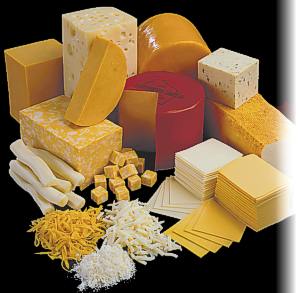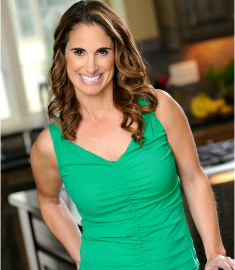Approximately 25% of adults in the United States have a limited ability to digest lactose, the naturally occurring sugar in dairy products. Because of the symptoms that occur when they consume lactose, they tend to avoid dairy – which poses a problem because they are then at risk for calcium insufficiency! Calcium is required by the body for secretion of hormones and enzymes, muscle contraction, blood vessel expansion and contraction, as well as transmitting electrical impulses throughout the nervous system. The adequate intake for males and females ages 19-50 years of age is 1000mg/day. 
Calcium is mainly found in dairy sources – milk, yogurt, cheese, etc. Dairy is the most abundant source for calcium. Some nondairy sources include some vegetables such as kale and broccoli. Also, many fruit juices, tofu, and cereals are fortified with calcium.
So if dairy is the most abundant sources for calcium, how can you get enough calcium via dairy if you’re lactose intolerant, or more commonly, lactase deficient? Here are 5 ways!
1. Consume 1 cup or less of milk (or 1 cup or less of ice cream) at one time. Some people with this condition can consume moderate amounts of dairy at one time. Keep lactose intake below 10g per meal (which amounts to about 1.5 to 2 cups of milk); studies have shown that such amount results in adverse symptoms in 50% of lactose maldigesters.
2. Consume dairy with other foods. Drink milk (1 cup or less) with a snack or lunch! The food from the me al can help your body absorb dairy with minimum symptoms
al can help your body absorb dairy with minimum symptoms
3. Consume yogurt with probiotics! The lactose has already been fermented/help ferment by the live culture in the yogurt, so your body doesn’t have to do it.
4. Use lactose-free milk. Lactose-free milk is real milk with lactase added to it, making it easier to digest. Lactaid is a brand of lactose-free milk. You can also try hemp milk or almond milk.
5. Consume aged cheese such as Cheddar or Swiss cheese, less lactose in them
Other ways to get calcium is to consume the nondairy food sources of calcium such as broccoli or kale, fortified cereal, fortified fruit juices, etc
If you still struggle to tolerate the dairy, you might benefit from avoiding foods that exacerbate your problems and make sure you eat lots of greens and also take a calcium supplement.
What are some other ways of getting calcium?
Assistance provided by Rachel Yam






